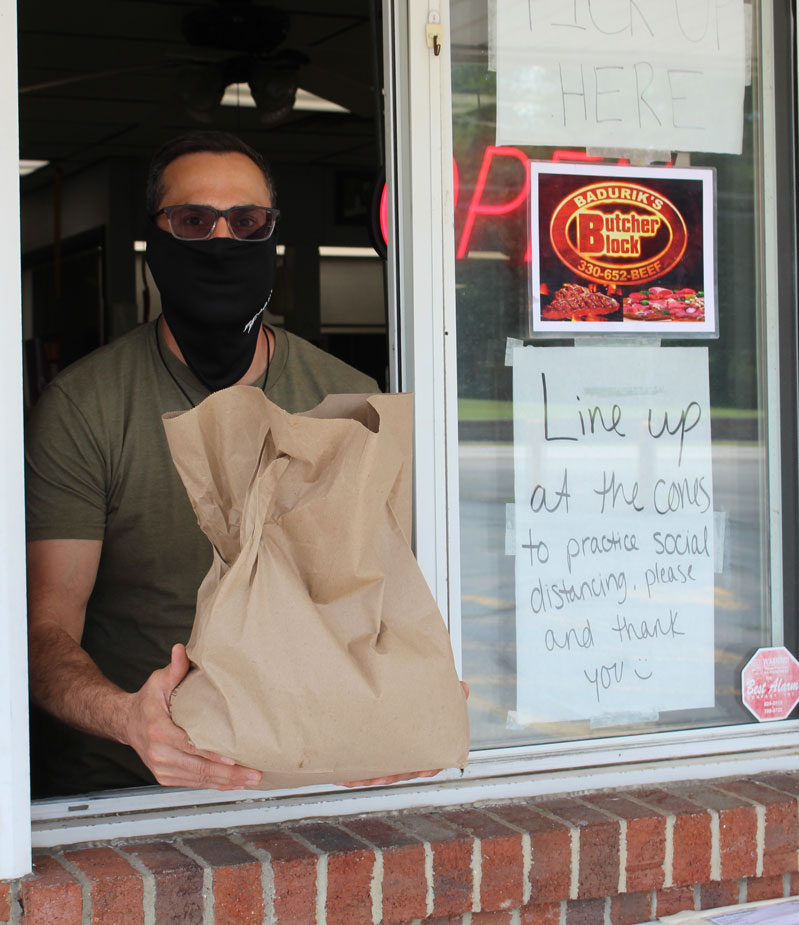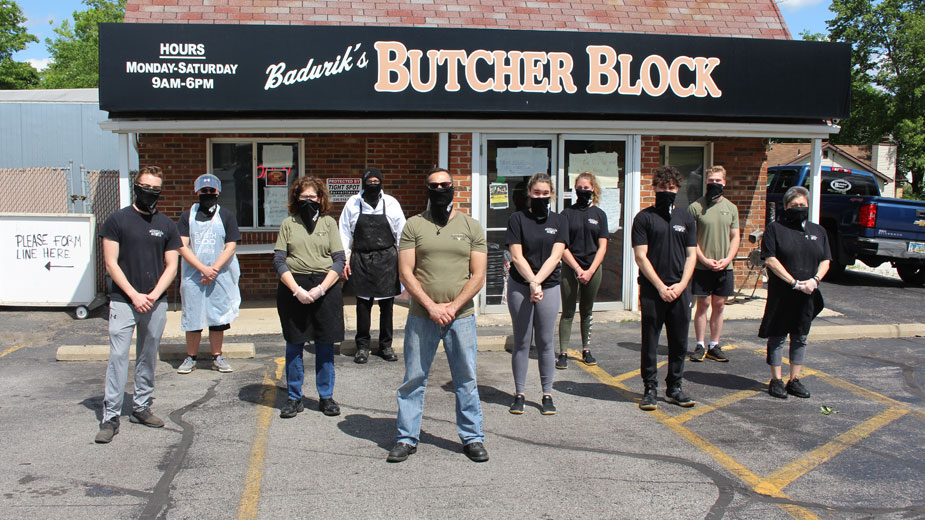YOUNGSTOWN, Ohio – A national meat shortage and higher prices drove many consumers to search for alternatives. While many small businesses furloughed employees and are struggling for survival, local butcher shops and area farmers saw steady increases in customers.
During Ohio’s six-week stay-at-home order, most families bought in bulk as consumers limited their shopping. The trend increased pressure on food processing centers, especially for staple foods such as eggs and meat.
When outbreaks of COVID-19, the disease spread by the coronavirus, shuttered several meat processing plants in the country, grocery stores limited the amount of meat consumers could purchase. Costs soared.
In grocery stores, the average price of fresh meat was 15.6% higher in the last week of May than it was in 2019, according to Nielsen data.
Steve Badurik has owned Badurik’s Butcher Block in Mineral Ridge for 12 years. He said that when Ohio shut down March 12, new customers flooded his store.
“When this happened it was a Thursday. And that following Monday I had locked my door for an hour. I moved my register next to front window so people could just walk up to front window and pick up their order for safety reasons,” he says.
Once meat-processing plants began to close because workers got sick with COVID-19, demand increased and he saw more new customers.
“Anytime there is news about a beef shortage or plant shutting down the phone lines ring off the hook,” Badurik says.
Business was so good that Badurik hired two additional full-time workers, for a total of 12 employees. He has temporarily stopped selling quarters of beef because of the time it takes to wrap the meat for freezer storage.
“It’s starting to level off now because there’s not as much panic and prices are coming down on red meat. I dropped some between $1 to $2 a pound from last week. Steaks are still high,” he adds.
According to the Associated Press, meat production has rebounded from its low point during the height of the coronavirus pandemic when dozens of plants were closed. But experts say consumer prices are likely to remain high and it will take months to work through a backlog of millions of pigs and cattle.

Grocery stores, which absorbed some of the meat price increases this spring, also may not pass along all the price cuts as they try to restore their profit margins.
James Moore is a fifth generation farmer. The owner of Moore’s Farm on Western Reserve Road in Canfield said he had such an increase in orders when processing plants closed that he had to temporarily stop taking new orders.
“We sell by the piece, quarters, halves. We have orders for hamburger booked three to four weeks out and steaks are six to seven weeks out,” Moore said. “We don’t do killing or processing here and can do two cattle a week.”
For a quarter of beef, Moore said he has orders booked through September. He raises cattle and hogs and farms soybeans on 340 acres. He normally will go through 100 cattle a year. He now only has 55.
“I don’t have enough animals of my own. Will buy some depending on the price of beef, but I’m a little leery,” he said. “I’m not surprised. You could see it coming and it stood to reason the demand would increase with everybody staying home. People began stocking up on quarters and halves so they didn’t have to rely on grocery stores and some people are more comfortable buying locally.”
He said as processing plants start to reopen around the country, demand is starting to level off. Moore says the area is lucky to have some local processing plants, which he said are booked out for year, meaning getting off the schedule due to a shortage in livestock.
To work through the national beef and pork backlogs quickly, meat processors may have to find ways to boost production higher than last year’s levels, said Will Sawyer, a protein economist at Cobank, an agribusiness bank. Before the pandemic, meatpacking plants had been expected to produce more than they did last year, reports the Associated Press.
Even as production levels climb, it will likely take all summer and maybe into the fall to work through the backlog of more than 1 million cattle and more than 2 million pigs that was created this spring when dozens of plants were closed. That will continue to create problems for farmers and ranchers who are struggling to find space for all those animals and face low prices because of the supply glut.
When Ohio shut down, Moore said he had customers coming from Cleveland and as far away as Columbus. In mid-March, he said demand for pigs was high. Normally he would go through three to four hogs weekly, but for a short time he was processing six to eight.
Sarah Motts and her family bought her grandfather’s small 50-acre farm six years ago in East Canton. They raise a small amount of cattle and pigs and farm hay.
She began raising and selling beef and pork as a hobby to a small following through Facebook and friends. She also sold to a market.
Since COVID-19, she stopped market sales, she said. She has had customers from the Mahoning Valley who have traveled to purchase meat at Motts Mapleton Farm since the pandemic.
“We push our pasture-based animals and try to balance what’s best for the animals and the land,” she said. “We’ve had an increase in sales, but we have a good solid base. We’re trying to find balance of what we’re able to produce and keep up with demand.”
She said at this time, a quarter of beef sells for $780 and half is $1,500. A whole hog sells for $975 and a half costs $520.
The Associated Press contributed to this story.
Pictured at top: Increased business allowed Steve Badurik to hire two additional full-time workers. He and his employees practice social distancing and wear face coverings at work.
